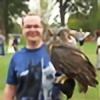HOME | DD
 artbyjrc — Flight of the wing fingers - Basal pterosaurs
artbyjrc — Flight of the wing fingers - Basal pterosaurs

#dimorphodon #eudimorphodon #extinct #jurassic #pterosaur #triassic #peteinosaurus #caviramus #austriadactylus #preodactylus #articodactylus #archosaur
Published: 2022-03-18 09:00:04 +0000 UTC; Views: 30300; Favourites: 364; Downloads: 49
Redirect to original
Description
A selection of the earliest representatives of pterosaurs, to scale.
Only three groups of vertebrates have achieved powered flight. Pterosaurs were the first during the Triassic, while the earliest flighted theropods/birds were in the Jurassic and the first bats are known from the Eocene. All three evolved slightly different approaches to the same problems that confront flying animals. Pterosaurs have skin (patagium) stretched between an elongated fourth finger and the body. Bats also have patagium between limbs and body, but use their whole hand for flying. Birds of course have elongated filaments (feathers) on their wings. Whilst the ancestors of birds is reasonably well understood with many fossils coming out of China, transitional species are largely unknown for bats and pterosaurs. For the latter, it appears that some small agile archosaurs such as Scleromochlus have a similar hindlimb morphology.
Pterosaurs were remarkably successful, dominating the Mesozoic skies over a period of 160 my and included the largest known flying species (see Too big to fly? - Azhdarchids ). All species have in common comparatively large skulls and a short torso compared to birds and bats. The skin-covered wings were strengthened by internal fibres known as actinofibrils. In line with being active fliers, pterosaurs possessed a hairy covering of pycnofibres (unique filaments to pterosaurs) and had an endothermic metabolism. Unlike birds, they walked quadrupedally on the three free fingers of the hand and a flat plantigrade foot.
Traditionally pterosaurs were split into two clades: the more primitive long-tailed rhamphorhynchoids and the advanced pterodactyloids. However as the latter group were descended from rhamphorhynchoids, this arrangement has been abandoned. These earliest basal forms generally had toothed jaws, long tails and wide wing membranes. There are some exceptions such as the short-tailed anurognathids (see Muppets of the Mesozoic - Anurognathid Pterosaurs ). The most basal forms are sometimes grouped together as eopterosaurs, but this is probably a loosely-related collection with some species like Dimorphodon being more closely linked to the other pterosaurs. They are generally linked by a range of primitive features: short wings, long hindlimbs and large feet (Preondactylus, Peteinosaurus, Articodactylus), heterodonty (Dimorphodon), multicusped teeth and flexible tail (Eudimorphodon, Austriadactylus, Caviramus). Central Europe during the Late Triassic was a hotspot for the oldest pterosaur fossils with multiple species having been found.
Related content
Comments: 77

👍: 2 ⏩: 1

👍: 0 ⏩: 0

👍: 1 ⏩: 1

👍: 1 ⏩: 1

👍: 1 ⏩: 1

👍: 1 ⏩: 1

👍: 1 ⏩: 1

👍: 1 ⏩: 0

👍: 1 ⏩: 1

👍: 2 ⏩: 2

👍: 1 ⏩: 1

👍: 1 ⏩: 1

👍: 0 ⏩: 1

👍: 0 ⏩: 1

👍: 0 ⏩: 0

👍: 0 ⏩: 1

👍: 1 ⏩: 1

👍: 0 ⏩: 0

👍: 1 ⏩: 1

👍: 1 ⏩: 0

👍: 1 ⏩: 1

👍: 0 ⏩: 1

👍: 1 ⏩: 2

👍: 1 ⏩: 1

👍: 1 ⏩: 1

👍: 1 ⏩: 0

👍: 1 ⏩: 1

👍: 0 ⏩: 1

👍: 2 ⏩: 1

👍: 0 ⏩: 0

👍: 1 ⏩: 1

👍: 1 ⏩: 1

👍: 1 ⏩: 0

👍: 1 ⏩: 2

👍: 1 ⏩: 0

👍: 2 ⏩: 0

👍: 1 ⏩: 1

👍: 2 ⏩: 1

👍: 2 ⏩: 1

👍: 1 ⏩: 1

👍: 1 ⏩: 0

👍: 2 ⏩: 1

👍: 2 ⏩: 1

👍: 1 ⏩: 1

👍: 1 ⏩: 0

👍: 1 ⏩: 1

👍: 0 ⏩: 2

👍: 1 ⏩: 2
| Next =>

















